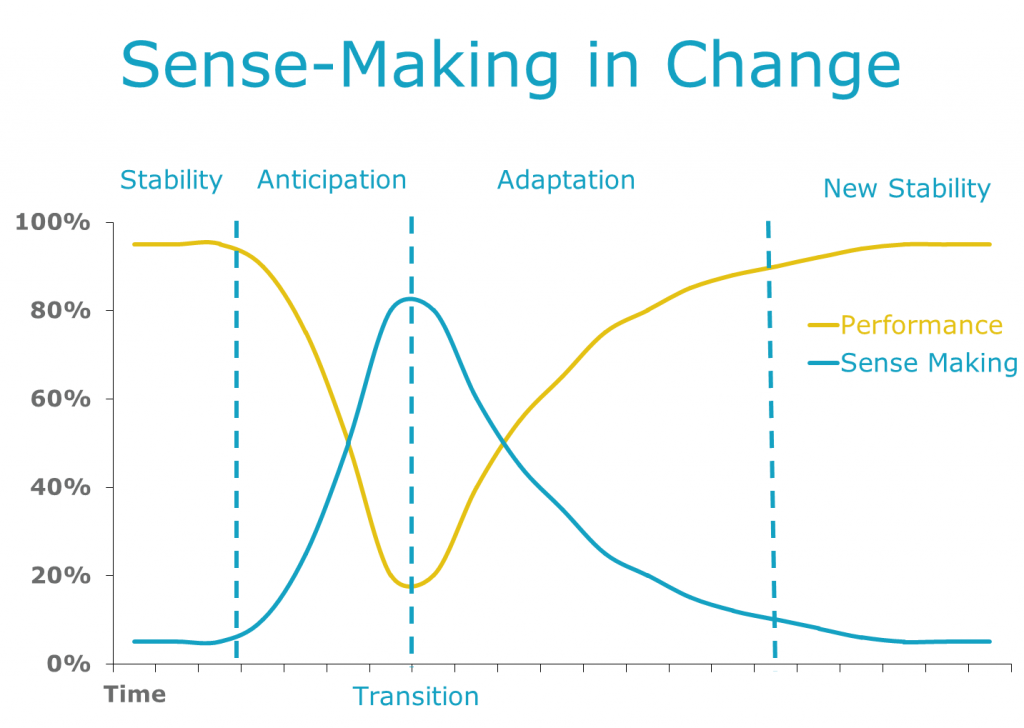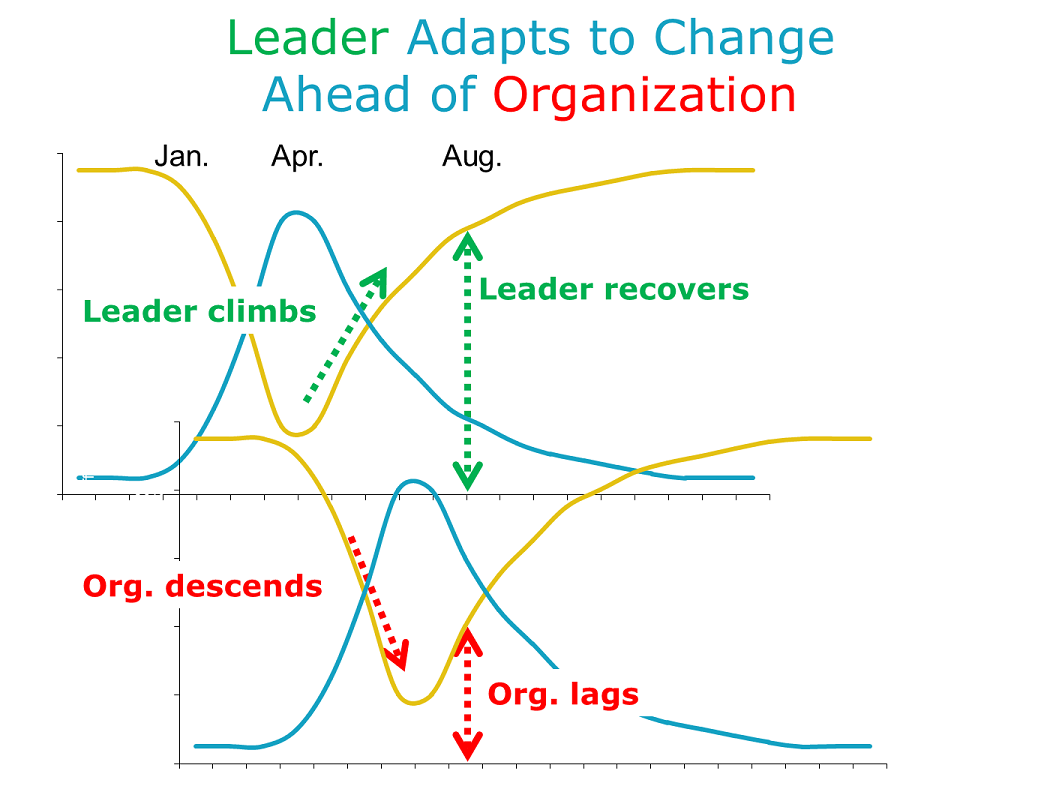When you walk in the room, who shows up for Read more →
Making Sense of Change
Posted Tuesday, August 14, 2012By Dr. Allen Slade, ACC
Can you perform at your maximum – can you give 100% – in the midst of change? Should you demand 100% from your team when they are facing change? Pushing hard for short term performance can undermine long term success and maximum growth. We need to leave breathing room for change to work its way out. We need to plan for a season of sense-making.
Meryl Louis defines sense-making as the psychological process of revising our cognitive map to figure out “what is new, different and – particularly – what was unanticipated.” Sense-making rewrites a large cognitive map:
- Understanding new duties, responsibilities, power structures, and peer relationships.
- Clarifying the new path to success, including new performance criteria and new goals.
- Developing new skills and behaviors to master the new role.
Here is a picture of sense-making in action:
When you go through a transition, you should expect a decline in performance. You will need to spend energy and time making sense of the new situation. In the midst of change, I ask my clients two questions:
How deep is your valley? The larger the transition, the deeper the expected decline in performance. A reorganization which just moves some boxes on the org chart will have little impact on your performance. A major change of systems, strategy, structure and culture will require more sense-making.
Where are you on the sense-making curve? The highest level of sense-making tends to occur at the point of transition. The hallway conversations linger longest the day the new strategy is announced. The job change is nested in farewell lunches and new employee orientation programs to give breathing space for sense-making.
When you lead others through change, you should plan for your team’s sense-making. This is tough when the change is triggered by competitive pressure. No matter what the performance demands, you can’t just wish away the need for sense-making. During the change, help your team through the valley. Give them perspective, just-in-time information and support to help move them to the other side.
If change is rolled out top-down, the change leader will be further along the curve. You start planning a change in January and announce the change in April. You will be at the peak of sense-making and stress at the April announcement, but your organization is just starting the process. By August, your performance is almost back to pre-change levels, but your organization is just bottoming out.
This lag in sense-making can cause frustration and impatience. As a leader, you can falsely blame your team for not getting with the program. The reality is they need more time because they started the transition after you.
As a leader, plan for the season of change. Know where your people are. “How deep is their valley?” “Where are they on the sense-making curve?” Truly lead, not just in planning the tasks of change but also in making sense of the new future. Provide perspective, just-in-time information and breathing space to help them climb the far side of the sense-making valley.




Great Article Prof! The visual content makes the text much more relevant.
It would be interesting to learn how to assign a magnitude to the depth of the valley and evaluate estimate time to stability. I’d love to hear your views on that?
Thanks for sharing this.
Deepinder, it might be possible to quantify the performance decline for a large group, for example with a quick survey. For the people you lead personally, I would encourage dialogue and observing them in action. If you see an issue, work with them to figure out how to move ahead.
Useful diagrams Allen. I have heard this phenomenon of the change leader being out of sync with the organisation as the ‘tarzan effect’. The view from the troops who are trudging along the jungle floor, cutting their way from tree to tree, and fighting off predators as they go, is of the leader swinging from tree to tree on a vine, screaming at the top of his voice, imploring people to “follow this way”. When viewed like this by the people, enthusiasm for following is likely to be low.
“Tarzan effect” is a great label. Leaders do well to consider up front how their actions will be perceived, and to get feedback on how things are actually perceived as the change rolls out.
Pingback: Listening in the Performance Valley